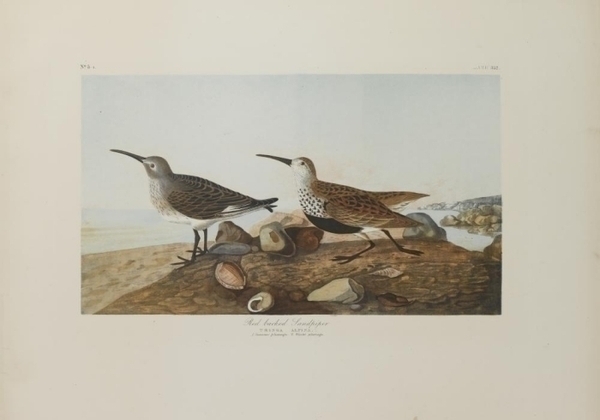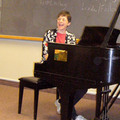Getting the picture(s): DAMS, part 1
First, a little background:
Two years ago, I was working in the Museum Archives, where we were busily scanning hundreds, then thousands of images. Once we started approaching ten thousand, it became clear that our bulging Access databases weren’t going to be a long term answer. That’s when I first encountered “DAMS” — and our new goal — a Digital Asset Management System. And so did others around the Museum: our photographers, the rights & reproductions person, our network managers. Others didn’t realize they wanted a DAMS. They just needed images, images, images. Right now!
It’s been a long road (think Wizard of Oz), but we’re finally in the first steps of implementation. Getting there, we talked to everyone around the Museum and to people in other museums who were setting out on the same road, investigated every commercial system out there, scheduled demos, tested some systems, set up a manual system to tide us over as our digital image collections continued to grow — more than 35,000 image of works of art to date. Most of the systems were developed either for big media corporations or for libraries, not museums, so a lot of the things we wanted to do either couldn’t be done or would take big work arounds. Other museums were finding out the same thing, as we discovered in a session at the Museum Computer Network meeting in Pasadena: Get the Picture: Experiences in Selecting and Implementing Digital Asset Management Systems in Museums. This is definitely the first generation of DAMS for museums. They’re bound to improve (I’ve been around long enough to remember when word processing programs required you to insert “dot commands” for formatting, so I have faith in progress…).
So here’s where we are now: we contracted with Luna Imaging for their Insight software, installed and configured it (a process that took longer than we expected), and have started to figure out how to apply the metadata template we designed (CDWA-Lite plus administrative and technical fields) in this environment. Our goal is to import data describing works of art from TMS (The Museum System, our collections management system) and create the image metadata in Luna. This is more complicated than we had hoped, but the good news is that Luna staff have done just this as a “services” project in the past, so we’re confident that our programmer will be able to work it out with the help of support staff.
And the objects in the Museum collection aren’t the only thing we want to get a handle on: we have upwards of 10,000 exhibition views, already online in simple html pages; Library, Archives, and Special Collections materials; views of the Museum building, people, and events; and all the thousands of images curators have collected over the years.
The point of all of this, of course, is to get it out there. The Museum has amazing collections and we’ve gradually started adding more images to the Museum website, both on the collections pages and our Brooklyn Bridge project. The DAMS will make it easier to share more with our online community.
As we speak, Shelley Bernstein and the rest of the IS staff are “laying the rails” for getting our image riches out there to the Web. Over the next months, I’ll try to post regular updates on what we’re thinking, what we’ve accomplished, and where we stand. If I descend too far into jargon, just comment and I’ll clarify. There was a time when I didn’t know what DAMS, metadata, CDWA, Dublin Core, and on and on meant, either.
Being an imaging maven, it would be ironic not to include a picture in my posts, so I’ll try to pick something interesting, beautiful, or amusing each time. Today, since it’s beautiful outside and I’m thinking about heading down to the water when I’m done here, it’s one of our amazing Audubon bird prints:


Deborah Wythe manages the Brooklyn Museum’s Digital Collections and Services department (the “Digital Lab”), coordinating digital imaging activities museum-wide, including the photo studio, scan lab, digital asset management, and rights and reproductions. Before moving to the Digital Lab, Deb was the Museum Archivist, where she managed the Museum’s historical records and worked on several technology-driven projects. Deb edited the new edition of Museum Archives: An Introduction, published by the Society of American Archivists in 2004, and wrote the chapters on the museum context, appraisal, description, records surveys, and photographs. Prior to joining the Brooklyn Museum staff, she worked on the Steinway Collection at the LaGuardia and Wagner Archives and, as an intern, organized the records of the Department of Musical Instruments at the Metropolitan Museum of Art. In her previous life, before discovering archives work (she has always been a museum maven), Deb earned her Master’s and PhD in musicology at NYU. She still studies the piano.
